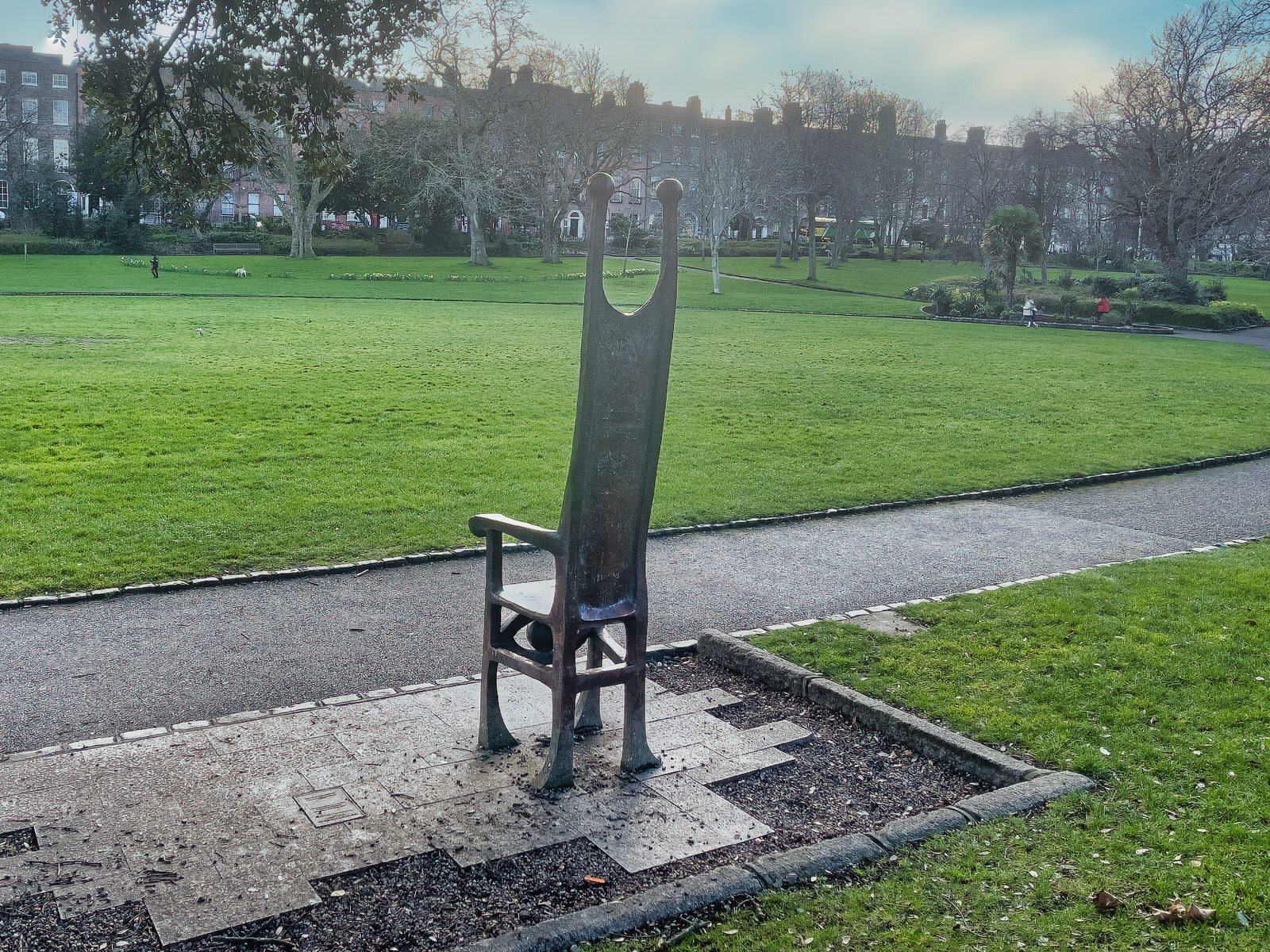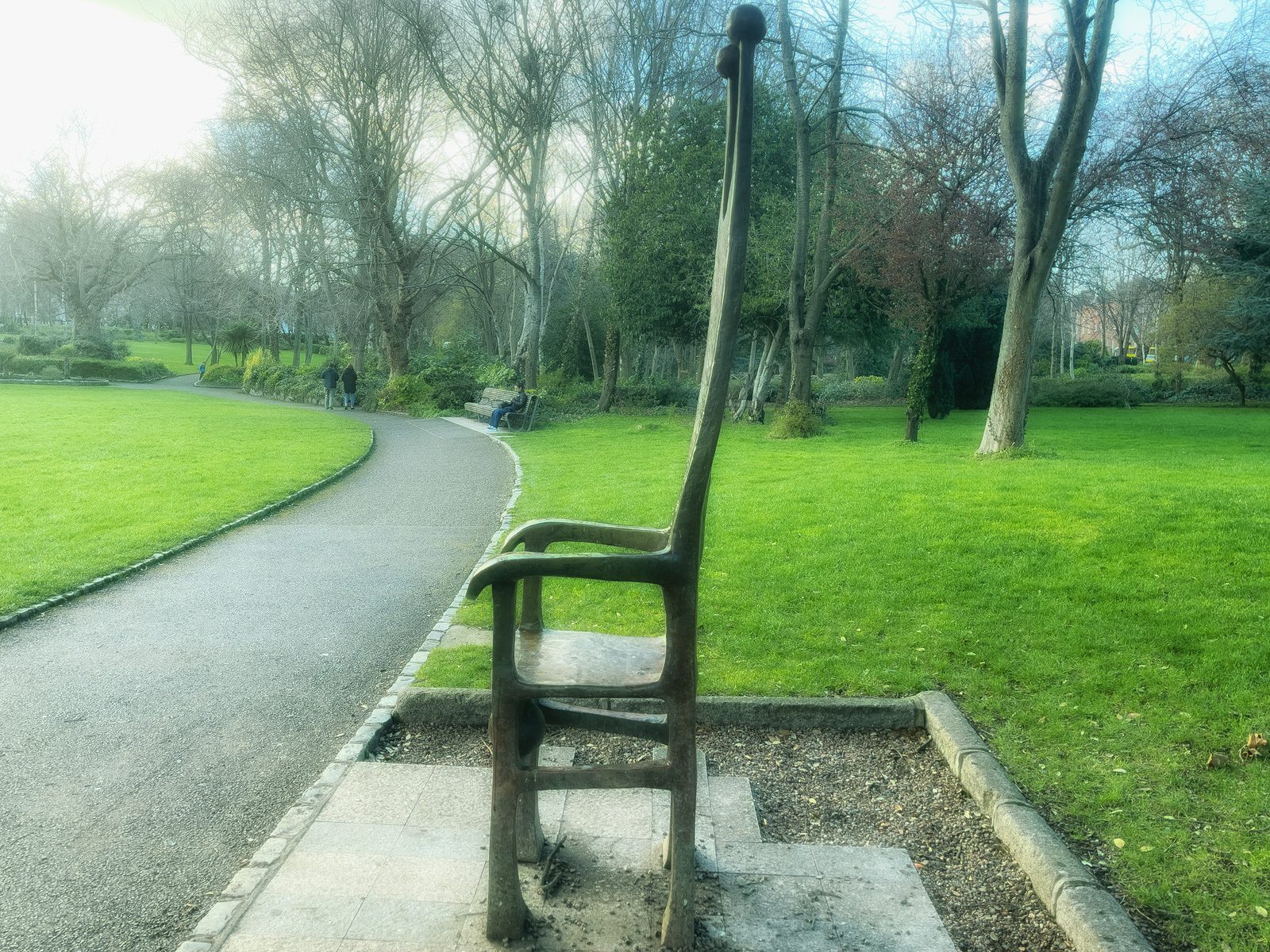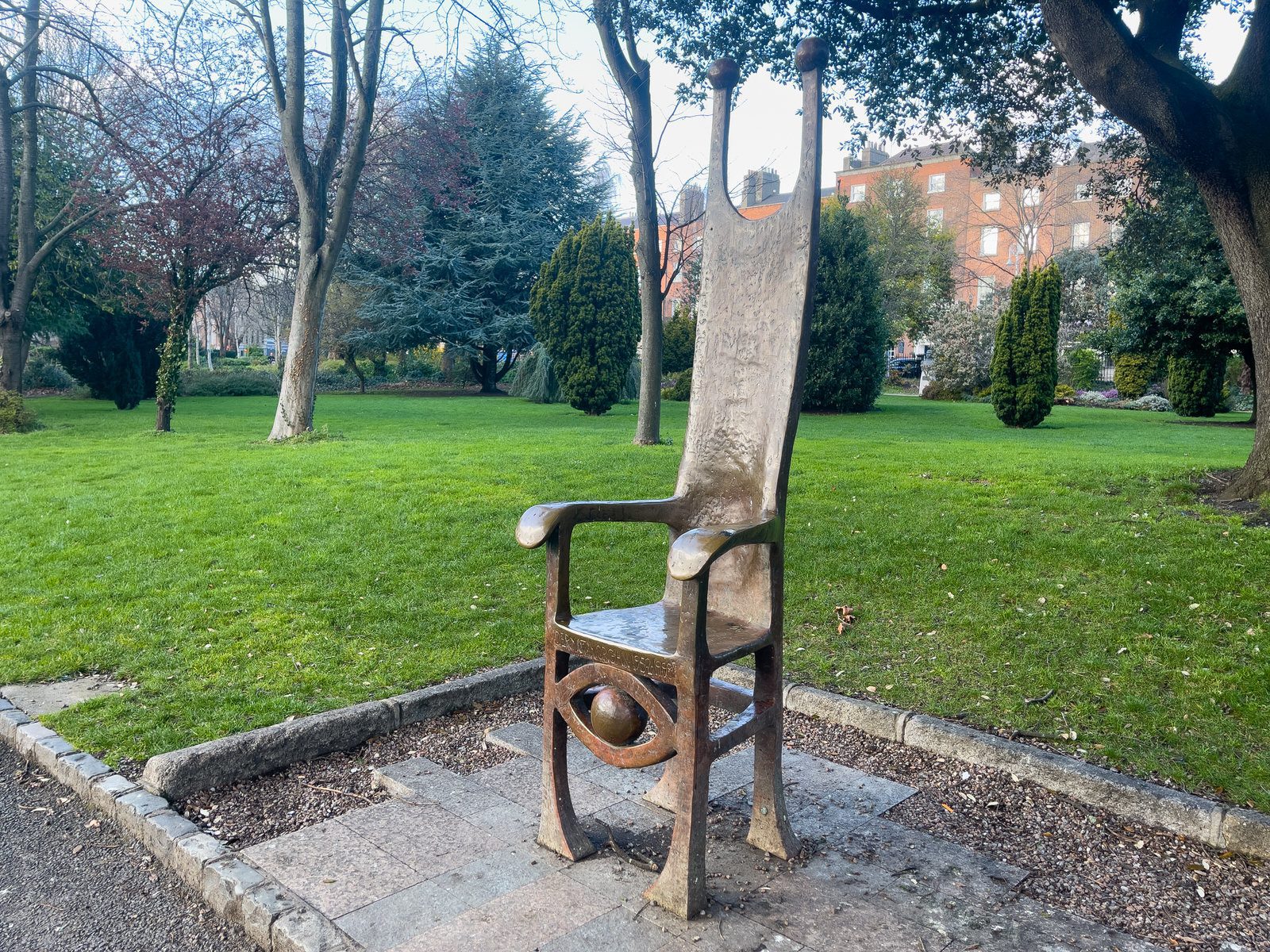NOW ON VIEW UNDER FOOTBRIDGE
There are volunteer groups who clean up sections of the canals in Dublin on a regular basis and what you see in my photographs is typical of what is dumped into the waters of the canals.
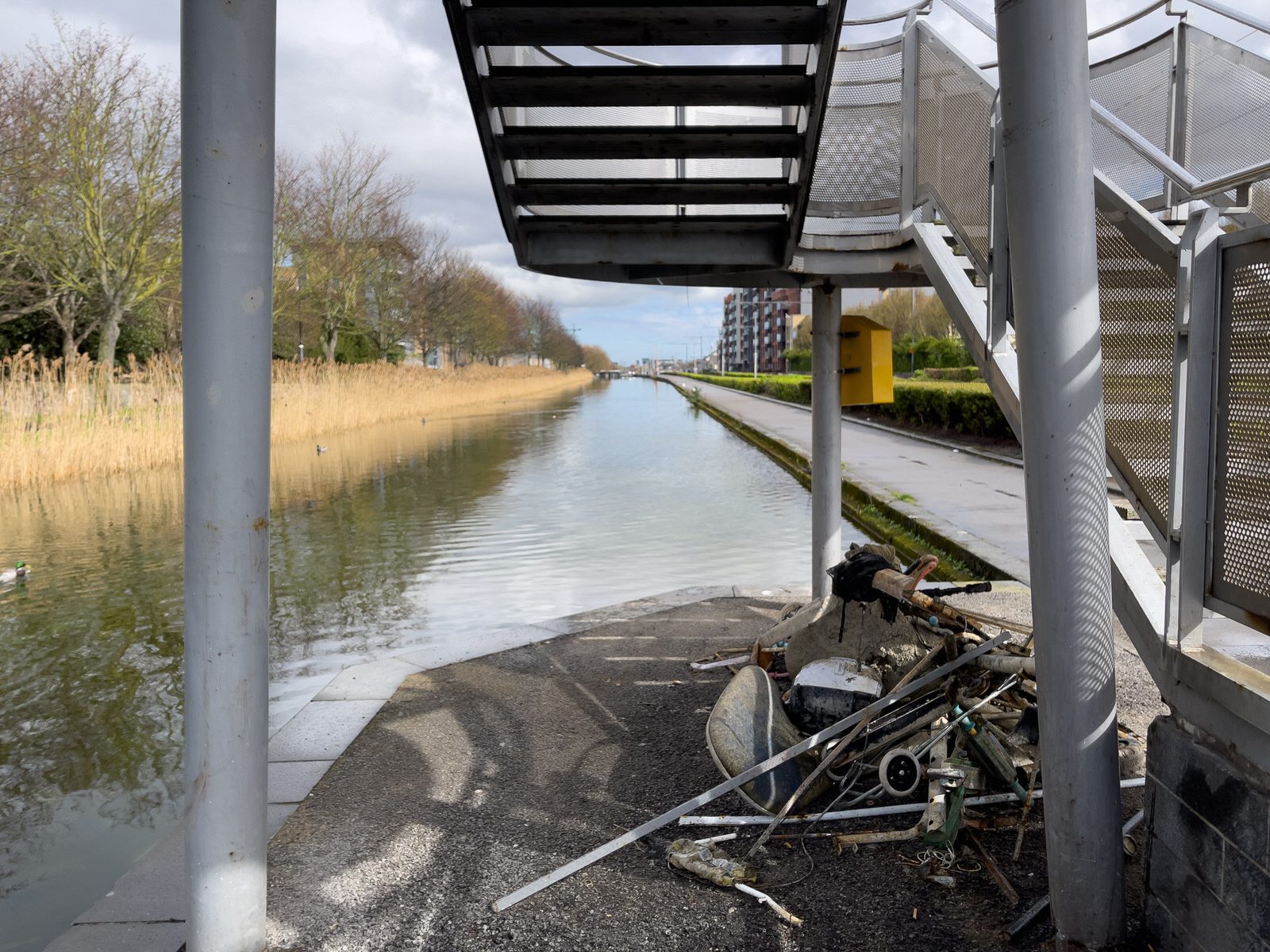
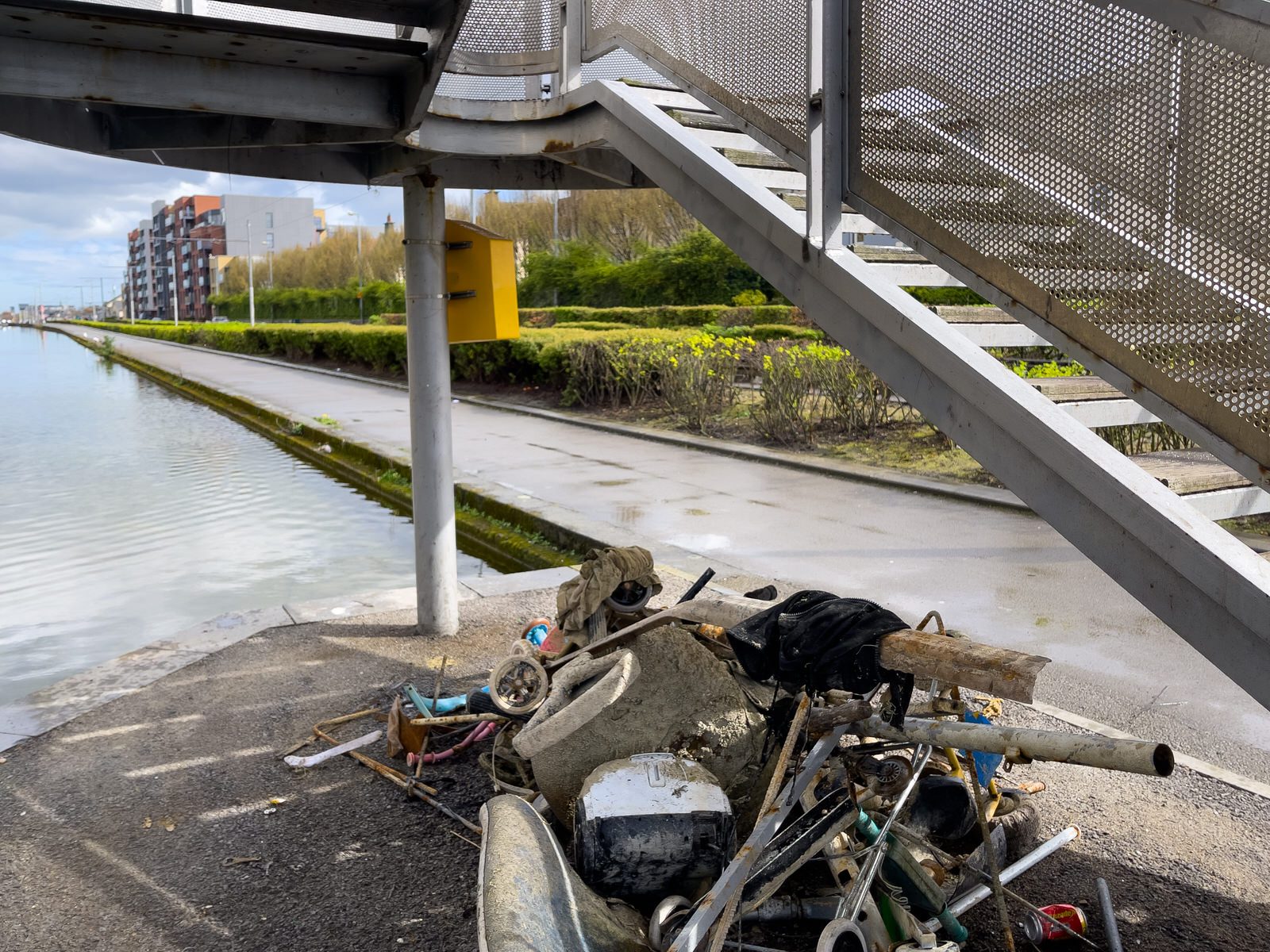

THE HEADLESS PHOTO BLOG
by infomatique
NOW ON VIEW UNDER FOOTBRIDGE
There are volunteer groups who clean up sections of the canals in Dublin on a regular basis and what you see in my photographs is typical of what is dumped into the waters of the canals.



by infomatique
SEAN WALSH MEMORIAL PARK AND THE WHITESTOWN STREAM
I have not visited this park since April 2007 and things did not go well back then as I encountered multiple problems back then. This time the tram journey was unpleasant as the trams were overcrowded but the park had greatly improved since 2007 and it was worth visiting.
I could be wrong but I believe that the Whitestown Stream is also known as the Jobstown Stream.
This park is located in the heart of Tallaght on the N81. Ornamental formal gardens lie side by side with attractive water features such as ponds and waterfalls: extensive tree planting allows shaded areas for relaxation. Pedestrian paths around the ponds allow for a pleasant walks and passive recreation.
The park has horticultural interest all year round with displays of flowering bulbs in the spring, green trees and wildflowers in the Summer, and wonderful display of colour in Autumn. The landscape of Sean Walsh Park contains a range of habitats including stream, woodland, grassland and lake. The grey squirrel, rabbit, common frog and pipistrelle bat can all be found in the park. The launch of the Sean Walsh Tree trail took place on 4th October 2018, on the day the Green Flag was raised in Sean Walsh Park. There are 15 tree species in the tree trail with an information plaque at each point. Tree trail Information sheets giving information about each tree species can be downloaded This downloadable A4 sheet leaves a space for children to carry out a rubbing of the plaques. Tallaght Stadium was officially opened in the park in May 2009 and is a purpose-built, 6,000-seat, state-of-the-art football stadium.
![SEAN WALSH MEMORIAL PARK AND THE WHITESTOWN STREAM [RED FOOTBRIDGES]-215870-1 RED FOOTBRIDGES 001](https://excellentstreetimages.com/2023HeadlessPhotoBlogWordPress/wp-content/uploads/2023/03/SEAN-WALSH-MEMORIAL-PARK-AND-THE-WHITESTOWN-STREAM-RED-FOOTBRIDGES-215870-1.jpg)
![SEAN WALSH MEMORIAL PARK AND THE WHITESTOWN STREAM [RED FOOTBRIDGES]-215871-1 RED FOOTBRIDGES 022](https://excellentstreetimages.com/2023HeadlessPhotoBlogWordPress/wp-content/uploads/2023/03/SEAN-WALSH-MEMORIAL-PARK-AND-THE-WHITESTOWN-STREAM-RED-FOOTBRIDGES-215871-1.jpg)
![SEAN WALSH MEMORIAL PARK AND THE WHITESTOWN STREAM [RED FOOTBRIDGES]-215872-1 RED FOOTBRIDGES 021](https://excellentstreetimages.com/2023HeadlessPhotoBlogWordPress/wp-content/uploads/2023/03/SEAN-WALSH-MEMORIAL-PARK-AND-THE-WHITESTOWN-STREAM-RED-FOOTBRIDGES-215872-1.jpg)
![SEAN WALSH MEMORIAL PARK AND THE WHITESTOWN STREAM [RED FOOTBRIDGES]-215865-1 RED FOOTBRIDGES 020](https://excellentstreetimages.com/2023HeadlessPhotoBlogWordPress/wp-content/uploads/2023/03/SEAN-WALSH-MEMORIAL-PARK-AND-THE-WHITESTOWN-STREAM-RED-FOOTBRIDGES-215865-1.jpg)
![SEAN WALSH MEMORIAL PARK AND THE WHITESTOWN STREAM [RED FOOTBRIDGES]-215866-1 RED FOOTBRIDGES 019](https://excellentstreetimages.com/2023HeadlessPhotoBlogWordPress/wp-content/uploads/2023/03/SEAN-WALSH-MEMORIAL-PARK-AND-THE-WHITESTOWN-STREAM-RED-FOOTBRIDGES-215866-1.jpg)
![SEAN WALSH MEMORIAL PARK AND THE WHITESTOWN STREAM [RED FOOTBRIDGES]-215867-1 RED FOOTBRIDGES 018](https://excellentstreetimages.com/2023HeadlessPhotoBlogWordPress/wp-content/uploads/2023/03/SEAN-WALSH-MEMORIAL-PARK-AND-THE-WHITESTOWN-STREAM-RED-FOOTBRIDGES-215867-1.jpg)
![SEAN WALSH MEMORIAL PARK AND THE WHITESTOWN STREAM [RED FOOTBRIDGES]-215868-1 RED FOOTBRIDGES 017](https://excellentstreetimages.com/2023HeadlessPhotoBlogWordPress/wp-content/uploads/2023/03/SEAN-WALSH-MEMORIAL-PARK-AND-THE-WHITESTOWN-STREAM-RED-FOOTBRIDGES-215868-1.jpg)
![SEAN WALSH MEMORIAL PARK AND THE WHITESTOWN STREAM [RED FOOTBRIDGES]-215869-1 RED FOOTBRIDGES 016](https://excellentstreetimages.com/2023HeadlessPhotoBlogWordPress/wp-content/uploads/2023/03/SEAN-WALSH-MEMORIAL-PARK-AND-THE-WHITESTOWN-STREAM-RED-FOOTBRIDGES-215869-1.jpg)
![SEAN WALSH MEMORIAL PARK AND THE WHITESTOWN STREAM [RED FOOTBRIDGES]-215859-1 RED FOOTBRIDGES 015](https://excellentstreetimages.com/2023HeadlessPhotoBlogWordPress/wp-content/uploads/2023/03/SEAN-WALSH-MEMORIAL-PARK-AND-THE-WHITESTOWN-STREAM-RED-FOOTBRIDGES-215859-1.jpg)
![SEAN WALSH MEMORIAL PARK AND THE WHITESTOWN STREAM [RED FOOTBRIDGES]-215860-1 RED FOOTBRIDGES 014](https://excellentstreetimages.com/2023HeadlessPhotoBlogWordPress/wp-content/uploads/2023/03/SEAN-WALSH-MEMORIAL-PARK-AND-THE-WHITESTOWN-STREAM-RED-FOOTBRIDGES-215860-1.jpg)
![SEAN WALSH MEMORIAL PARK AND THE WHITESTOWN STREAM [RED FOOTBRIDGES]-215861-1 RED FOOTBRIDGES 013](https://excellentstreetimages.com/2023HeadlessPhotoBlogWordPress/wp-content/uploads/2023/03/SEAN-WALSH-MEMORIAL-PARK-AND-THE-WHITESTOWN-STREAM-RED-FOOTBRIDGES-215861-1.jpg)
![SEAN WALSH MEMORIAL PARK AND THE WHITESTOWN STREAM [RED FOOTBRIDGES]-215862-1 RED FOOTBRIDGES 012](https://excellentstreetimages.com/2023HeadlessPhotoBlogWordPress/wp-content/uploads/2023/03/SEAN-WALSH-MEMORIAL-PARK-AND-THE-WHITESTOWN-STREAM-RED-FOOTBRIDGES-215862-1.jpg)
![SEAN WALSH MEMORIAL PARK AND THE WHITESTOWN STREAM [RED FOOTBRIDGES]-215863-1 RED FOOTBRIDGES 011](https://excellentstreetimages.com/2023HeadlessPhotoBlogWordPress/wp-content/uploads/2023/03/SEAN-WALSH-MEMORIAL-PARK-AND-THE-WHITESTOWN-STREAM-RED-FOOTBRIDGES-215863-1.jpg)
![SEAN WALSH MEMORIAL PARK AND THE WHITESTOWN STREAM [RED FOOTBRIDGES]-215864-1 RED FOOTBRIDGES 010](https://excellentstreetimages.com/2023HeadlessPhotoBlogWordPress/wp-content/uploads/2023/03/SEAN-WALSH-MEMORIAL-PARK-AND-THE-WHITESTOWN-STREAM-RED-FOOTBRIDGES-215864-1.jpg)
![SEAN WALSH MEMORIAL PARK AND THE WHITESTOWN STREAM [RED FOOTBRIDGES]-215850-1 RED FOOTBRIDGES 009](https://excellentstreetimages.com/2023HeadlessPhotoBlogWordPress/wp-content/uploads/2023/03/SEAN-WALSH-MEMORIAL-PARK-AND-THE-WHITESTOWN-STREAM-RED-FOOTBRIDGES-215850-1.jpg)
![SEAN WALSH MEMORIAL PARK AND THE WHITESTOWN STREAM [RED FOOTBRIDGES]-215851-1 RED FOOTBRIDGES 008](https://excellentstreetimages.com/2023HeadlessPhotoBlogWordPress/wp-content/uploads/2023/03/SEAN-WALSH-MEMORIAL-PARK-AND-THE-WHITESTOWN-STREAM-RED-FOOTBRIDGES-215851-1.jpg)
![SEAN WALSH MEMORIAL PARK AND THE WHITESTOWN STREAM [RED FOOTBRIDGES]-215852-1 RED FOOTBRIDGES 007](https://excellentstreetimages.com/2023HeadlessPhotoBlogWordPress/wp-content/uploads/2023/03/SEAN-WALSH-MEMORIAL-PARK-AND-THE-WHITESTOWN-STREAM-RED-FOOTBRIDGES-215852-1.jpg)
![SEAN WALSH MEMORIAL PARK AND THE WHITESTOWN STREAM [RED FOOTBRIDGES]-215853-1 RED FOOTBRIDGES 006](https://excellentstreetimages.com/2023HeadlessPhotoBlogWordPress/wp-content/uploads/2023/03/SEAN-WALSH-MEMORIAL-PARK-AND-THE-WHITESTOWN-STREAM-RED-FOOTBRIDGES-215853-1.jpg)
![SEAN WALSH MEMORIAL PARK AND THE WHITESTOWN STREAM [RED FOOTBRIDGES]-215854-1 RED FOOTBRIDGES 005](https://excellentstreetimages.com/2023HeadlessPhotoBlogWordPress/wp-content/uploads/2023/03/SEAN-WALSH-MEMORIAL-PARK-AND-THE-WHITESTOWN-STREAM-RED-FOOTBRIDGES-215854-1.jpg)
![SEAN WALSH MEMORIAL PARK AND THE WHITESTOWN STREAM [RED FOOTBRIDGES]-215855-1 RED FOOTBRIDGES 004](https://excellentstreetimages.com/2023HeadlessPhotoBlogWordPress/wp-content/uploads/2023/03/SEAN-WALSH-MEMORIAL-PARK-AND-THE-WHITESTOWN-STREAM-RED-FOOTBRIDGES-215855-1.jpg)
![SEAN WALSH MEMORIAL PARK AND THE WHITESTOWN STREAM [RED FOOTBRIDGES]-215856-1 RED FOOTBRIDGES 003](https://excellentstreetimages.com/2023HeadlessPhotoBlogWordPress/wp-content/uploads/2023/03/SEAN-WALSH-MEMORIAL-PARK-AND-THE-WHITESTOWN-STREAM-RED-FOOTBRIDGES-215856-1.jpg)
![SEAN WALSH MEMORIAL PARK AND THE WHITESTOWN STREAM [RED FOOTBRIDGES]-215857-1 RED FOOTBRIDGES 002](https://excellentstreetimages.com/2023HeadlessPhotoBlogWordPress/wp-content/uploads/2023/03/SEAN-WALSH-MEMORIAL-PARK-AND-THE-WHITESTOWN-STREAM-RED-FOOTBRIDGES-215857-1.jpg)
![SEAN WALSH MEMORIAL PARK AND THE WHITESTOWN STREAM [RED FOOTBRIDGES]-215858-1 RED FOOTBRIDGES 023](https://excellentstreetimages.com/2023HeadlessPhotoBlogWordPress/wp-content/uploads/2023/03/SEAN-WALSH-MEMORIAL-PARK-AND-THE-WHITESTOWN-STREAM-RED-FOOTBRIDGES-215858-1.jpg)
by infomatique
CHARLEMONT STREET REGENERATION PROJECT
This was my first time to visit this new complex.
Charlemont Square is the second phase of the transformative Charlemont Street regeneration placemaking project in the heart of Dublin 2. This €210 million mixed-use development involved the reimaging of c.13,000m2 – mostly derelict – space on a logistically challenging site close to the city centre. The creation of a focal point for the local community was a key ambition of this development, which commenced in January 2018 and was completed in December 2022.
Works consisted of the demolition and site clearance of four existing residential blocks, including specialist asbestos removal, prior to the construction of six multi-storey blocks.
This phase of regeneration delivered 96 apartments, 355,000ft² of Grade A office space and 30,000ft² of retail space for the local area.
The residential portion of this project comprises a unique collection of one, two and three-bed apartments, designed and delivered to a high quality.
The office incorporates Grade 2 basement over two levels, cast in-situ RC frame with bespoke curtain walling and glazing with large areas of brick and stone cladding. Internally, the accommodation provides efficient floor plates with suspended ceilings with 650mm void, 150mm raised access floors and minimised internal columns with 12m clear spans. Roof terraces and tenant facilities including secure basement car parking and bicycle spaces, showers and drying facilities are also provided. The scheme has a WireScore rating of Platinum, LEED Gold, and an A3 BER rating.
At street level, the retail space incorporates convenience retail, food and beverage uses and an art studio, complementing the residential and office accommodation.
[March 2014] The Charlemont Street flat complex near Ranelagh was to have been redeveloped as a public-private partnership scheme including shops, restaurants, offices, as well as 260 new apartments. However, despite beginning demolition, including razing Scott’s 1944 building Ffrench Mullen House, the council had been unable to finalise a deal on the regeneration project. Independent city councillor Mannix Flynn sought to save Ffrench Mullen House, because its demolition was ethically wrong given the block was a “one-off social housing unit, designed by Michael Scott in 1944 during the Emergency”, and that it should be reused. Ffrench Mullen House was named after Madeline Ffrench Mullen who developed the nearby St Ultan’s Hospital for Women and Infants in 1919 in response to the dire socioeconomic conditions in Dublin.
![CHARLEMONT SQUARE [CHARLEMONT STREET REGENERATION PROJECT]-215603-1 CHARLEMONT SQUARE 26 MARCH 2023 037](https://excellentstreetimages.com/2023HeadlessPhotoBlogWordPress/wp-content/uploads/2023/03/CHARLEMONT-SQUARE-CHARLEMONT-STREET-REGENERATION-PROJECT-215603-1.jpg)
![CHARLEMONT SQUARE [CHARLEMONT STREET REGENERATION PROJECT]-215604-1 CHARLEMONT SQUARE 26 MARCH 2023 036](https://excellentstreetimages.com/2023HeadlessPhotoBlogWordPress/wp-content/uploads/2023/03/CHARLEMONT-SQUARE-CHARLEMONT-STREET-REGENERATION-PROJECT-215604-1.jpg)
![CHARLEMONT SQUARE [CHARLEMONT STREET REGENERATION PROJECT]-215605-1 CHARLEMONT SQUARE 26 MARCH 2023 035](https://excellentstreetimages.com/2023HeadlessPhotoBlogWordPress/wp-content/uploads/2023/03/CHARLEMONT-SQUARE-CHARLEMONT-STREET-REGENERATION-PROJECT-215605-1.jpg)
![CHARLEMONT SQUARE [CHARLEMONT STREET REGENERATION PROJECT]-215606-1 CHARLEMONT SQUARE 26 MARCH 2023 034](https://excellentstreetimages.com/2023HeadlessPhotoBlogWordPress/wp-content/uploads/2023/03/CHARLEMONT-SQUARE-CHARLEMONT-STREET-REGENERATION-PROJECT-215606-1.jpg)
![CHARLEMONT SQUARE [CHARLEMONT STREET REGENERATION PROJECT]-215607-1 CHARLEMONT SQUARE 26 MARCH 2023 033](https://excellentstreetimages.com/2023HeadlessPhotoBlogWordPress/wp-content/uploads/2023/03/CHARLEMONT-SQUARE-CHARLEMONT-STREET-REGENERATION-PROJECT-215607-1.jpg)
![CHARLEMONT SQUARE [CHARLEMONT STREET REGENERATION PROJECT]-215608-1 CHARLEMONT SQUARE 26 MARCH 2023 032](https://excellentstreetimages.com/2023HeadlessPhotoBlogWordPress/wp-content/uploads/2023/03/CHARLEMONT-SQUARE-CHARLEMONT-STREET-REGENERATION-PROJECT-215608-1.jpg)
![CHARLEMONT SQUARE [CHARLEMONT STREET REGENERATION PROJECT]-215609-1 CHARLEMONT SQUARE 26 MARCH 2023 031](https://excellentstreetimages.com/2023HeadlessPhotoBlogWordPress/wp-content/uploads/2023/03/CHARLEMONT-SQUARE-CHARLEMONT-STREET-REGENERATION-PROJECT-215609-1.jpg)
![CHARLEMONT SQUARE [CHARLEMONT STREET REGENERATION PROJECT]-215610-1 CHARLEMONT SQUARE 26 MARCH 2023 030](https://excellentstreetimages.com/2023HeadlessPhotoBlogWordPress/wp-content/uploads/2023/03/CHARLEMONT-SQUARE-CHARLEMONT-STREET-REGENERATION-PROJECT-215610-1.jpg)
![CHARLEMONT SQUARE [CHARLEMONT STREET REGENERATION PROJECT]-215611-1 CHARLEMONT SQUARE 26 MARCH 2023 029](https://excellentstreetimages.com/2023HeadlessPhotoBlogWordPress/wp-content/uploads/2023/03/CHARLEMONT-SQUARE-CHARLEMONT-STREET-REGENERATION-PROJECT-215611-1.jpg)
![CHARLEMONT SQUARE [CHARLEMONT STREET REGENERATION PROJECT]-215594-1 CHARLEMONT SQUARE 26 MARCH 2023 028](https://excellentstreetimages.com/2023HeadlessPhotoBlogWordPress/wp-content/uploads/2023/03/CHARLEMONT-SQUARE-CHARLEMONT-STREET-REGENERATION-PROJECT-215594-1.jpg)
![CHARLEMONT SQUARE [CHARLEMONT STREET REGENERATION PROJECT]-215595-1 CHARLEMONT SQUARE 26 MARCH 2023 027](https://excellentstreetimages.com/2023HeadlessPhotoBlogWordPress/wp-content/uploads/2023/03/CHARLEMONT-SQUARE-CHARLEMONT-STREET-REGENERATION-PROJECT-215595-1.jpg)
![CHARLEMONT SQUARE [CHARLEMONT STREET REGENERATION PROJECT]-215596-1 CHARLEMONT SQUARE 26 MARCH 2023 026](https://excellentstreetimages.com/2023HeadlessPhotoBlogWordPress/wp-content/uploads/2023/03/CHARLEMONT-SQUARE-CHARLEMONT-STREET-REGENERATION-PROJECT-215596-1.jpg)
![CHARLEMONT SQUARE [CHARLEMONT STREET REGENERATION PROJECT]-215597-1 CHARLEMONT SQUARE 26 MARCH 2023 025](https://excellentstreetimages.com/2023HeadlessPhotoBlogWordPress/wp-content/uploads/2023/03/CHARLEMONT-SQUARE-CHARLEMONT-STREET-REGENERATION-PROJECT-215597-1.jpg)
![CHARLEMONT SQUARE [CHARLEMONT STREET REGENERATION PROJECT]-215598-1 CHARLEMONT SQUARE 26 MARCH 2023 024](https://excellentstreetimages.com/2023HeadlessPhotoBlogWordPress/wp-content/uploads/2023/03/CHARLEMONT-SQUARE-CHARLEMONT-STREET-REGENERATION-PROJECT-215598-1.jpg)
![CHARLEMONT SQUARE [CHARLEMONT STREET REGENERATION PROJECT]-215599-1 CHARLEMONT SQUARE 26 MARCH 2023 023](https://excellentstreetimages.com/2023HeadlessPhotoBlogWordPress/wp-content/uploads/2023/03/CHARLEMONT-SQUARE-CHARLEMONT-STREET-REGENERATION-PROJECT-215599-1.jpg)
![CHARLEMONT SQUARE [CHARLEMONT STREET REGENERATION PROJECT]-215600-1 CHARLEMONT SQUARE 26 MARCH 2023 022](https://excellentstreetimages.com/2023HeadlessPhotoBlogWordPress/wp-content/uploads/2023/03/CHARLEMONT-SQUARE-CHARLEMONT-STREET-REGENERATION-PROJECT-215600-1.jpg)
![CHARLEMONT SQUARE [CHARLEMONT STREET REGENERATION PROJECT]-215601-1 CHARLEMONT SQUARE 26 MARCH 2023 021](https://excellentstreetimages.com/2023HeadlessPhotoBlogWordPress/wp-content/uploads/2023/03/CHARLEMONT-SQUARE-CHARLEMONT-STREET-REGENERATION-PROJECT-215601-1.jpg)
![CHARLEMONT SQUARE [CHARLEMONT STREET REGENERATION PROJECT]-215602-1 CHARLEMONT SQUARE 26 MARCH 2023 020](https://excellentstreetimages.com/2023HeadlessPhotoBlogWordPress/wp-content/uploads/2023/03/CHARLEMONT-SQUARE-CHARLEMONT-STREET-REGENERATION-PROJECT-215602-1.jpg)
![CHARLEMONT SQUARE [CHARLEMONT STREET REGENERATION PROJECT]-215585-1 CHARLEMONT SQUARE 26 MARCH 2023 019](https://excellentstreetimages.com/2023HeadlessPhotoBlogWordPress/wp-content/uploads/2023/03/CHARLEMONT-SQUARE-CHARLEMONT-STREET-REGENERATION-PROJECT-215585-1.jpg)
![CHARLEMONT SQUARE [CHARLEMONT STREET REGENERATION PROJECT]-215586-1 CHARLEMONT SQUARE 26 MARCH 2023 018](https://excellentstreetimages.com/2023HeadlessPhotoBlogWordPress/wp-content/uploads/2023/03/CHARLEMONT-SQUARE-CHARLEMONT-STREET-REGENERATION-PROJECT-215586-1.jpg)
![CHARLEMONT SQUARE [CHARLEMONT STREET REGENERATION PROJECT]-215587-1 CHARLEMONT SQUARE 26 MARCH 2023 017](https://excellentstreetimages.com/2023HeadlessPhotoBlogWordPress/wp-content/uploads/2023/03/CHARLEMONT-SQUARE-CHARLEMONT-STREET-REGENERATION-PROJECT-215587-1.jpg)
![CHARLEMONT SQUARE [CHARLEMONT STREET REGENERATION PROJECT]-215588-1 CHARLEMONT SQUARE 26 MARCH 2023 016](https://excellentstreetimages.com/2023HeadlessPhotoBlogWordPress/wp-content/uploads/2023/03/CHARLEMONT-SQUARE-CHARLEMONT-STREET-REGENERATION-PROJECT-215588-1.jpg)
![CHARLEMONT SQUARE [CHARLEMONT STREET REGENERATION PROJECT]-215589-1 CHARLEMONT SQUARE 26 MARCH 2023 015](https://excellentstreetimages.com/2023HeadlessPhotoBlogWordPress/wp-content/uploads/2023/03/CHARLEMONT-SQUARE-CHARLEMONT-STREET-REGENERATION-PROJECT-215589-1.jpg)
![CHARLEMONT SQUARE [CHARLEMONT STREET REGENERATION PROJECT]-215590-1 CHARLEMONT SQUARE 26 MARCH 2023 014](https://excellentstreetimages.com/2023HeadlessPhotoBlogWordPress/wp-content/uploads/2023/03/CHARLEMONT-SQUARE-CHARLEMONT-STREET-REGENERATION-PROJECT-215590-1.jpg)
![CHARLEMONT SQUARE [CHARLEMONT STREET REGENERATION PROJECT]-215591-1 CHARLEMONT SQUARE 26 MARCH 2023 013](https://excellentstreetimages.com/2023HeadlessPhotoBlogWordPress/wp-content/uploads/2023/03/CHARLEMONT-SQUARE-CHARLEMONT-STREET-REGENERATION-PROJECT-215591-1.jpg)
![CHARLEMONT SQUARE [CHARLEMONT STREET REGENERATION PROJECT]-215592-1 CHARLEMONT SQUARE 26 MARCH 2023 012](https://excellentstreetimages.com/2023HeadlessPhotoBlogWordPress/wp-content/uploads/2023/03/CHARLEMONT-SQUARE-CHARLEMONT-STREET-REGENERATION-PROJECT-215592-1.jpg)
![CHARLEMONT SQUARE [CHARLEMONT STREET REGENERATION PROJECT]-215593-1 CHARLEMONT SQUARE 26 MARCH 2023 011](https://excellentstreetimages.com/2023HeadlessPhotoBlogWordPress/wp-content/uploads/2023/03/CHARLEMONT-SQUARE-CHARLEMONT-STREET-REGENERATION-PROJECT-215593-1.jpg)
![CHARLEMONT SQUARE [CHARLEMONT STREET REGENERATION PROJECT]-215577-1 CHARLEMONT SQUARE 26 MARCH 2023 010](https://excellentstreetimages.com/2023HeadlessPhotoBlogWordPress/wp-content/uploads/2023/03/CHARLEMONT-SQUARE-CHARLEMONT-STREET-REGENERATION-PROJECT-215577-1.jpg)
![CHARLEMONT SQUARE [CHARLEMONT STREET REGENERATION PROJECT]-215578-1 CHARLEMONT SQUARE 26 MARCH 2023 009](https://excellentstreetimages.com/2023HeadlessPhotoBlogWordPress/wp-content/uploads/2023/03/CHARLEMONT-SQUARE-CHARLEMONT-STREET-REGENERATION-PROJECT-215578-1.jpg)
![CHARLEMONT SQUARE [CHARLEMONT STREET REGENERATION PROJECT]-215579-1 CHARLEMONT SQUARE 26 MARCH 2023 008](https://excellentstreetimages.com/2023HeadlessPhotoBlogWordPress/wp-content/uploads/2023/03/CHARLEMONT-SQUARE-CHARLEMONT-STREET-REGENERATION-PROJECT-215579-1.jpg)
![CHARLEMONT SQUARE [CHARLEMONT STREET REGENERATION PROJECT]-215580-1 CHARLEMONT SQUARE 26 MARCH 2023 007](https://excellentstreetimages.com/2023HeadlessPhotoBlogWordPress/wp-content/uploads/2023/03/CHARLEMONT-SQUARE-CHARLEMONT-STREET-REGENERATION-PROJECT-215580-1.jpg)
![CHARLEMONT SQUARE [CHARLEMONT STREET REGENERATION PROJECT]-215581-1 CHARLEMONT SQUARE 26 MARCH 2023 006](https://excellentstreetimages.com/2023HeadlessPhotoBlogWordPress/wp-content/uploads/2023/03/CHARLEMONT-SQUARE-CHARLEMONT-STREET-REGENERATION-PROJECT-215581-1.jpg)
![CHARLEMONT SQUARE [CHARLEMONT STREET REGENERATION PROJECT]-215582-1 CHARLEMONT SQUARE 26 MARCH 2023 005](https://excellentstreetimages.com/2023HeadlessPhotoBlogWordPress/wp-content/uploads/2023/03/CHARLEMONT-SQUARE-CHARLEMONT-STREET-REGENERATION-PROJECT-215582-1.jpg)
![CHARLEMONT SQUARE [CHARLEMONT STREET REGENERATION PROJECT]-215583-1 CHARLEMONT SQUARE 26 MARCH 2023 004](https://excellentstreetimages.com/2023HeadlessPhotoBlogWordPress/wp-content/uploads/2023/03/CHARLEMONT-SQUARE-CHARLEMONT-STREET-REGENERATION-PROJECT-215583-1.jpg)
![CHARLEMONT SQUARE [CHARLEMONT STREET REGENERATION PROJECT]-215584-1 CHARLEMONT SQUARE 26 MARCH 2023 003](https://excellentstreetimages.com/2023HeadlessPhotoBlogWordPress/wp-content/uploads/2023/03/CHARLEMONT-SQUARE-CHARLEMONT-STREET-REGENERATION-PROJECT-215584-1.jpg)
![CHARLEMONT SQUARE [CHARLEMONT STREET REGENERATION PROJECT]-215575-1 CHARLEMONT SQUARE 26 MARCH 2023 002](https://excellentstreetimages.com/2023HeadlessPhotoBlogWordPress/wp-content/uploads/2023/03/CHARLEMONT-SQUARE-CHARLEMONT-STREET-REGENERATION-PROJECT-215575-1.jpg)
![CHARLEMONT SQUARE [CHARLEMONT STREET REGENERATION PROJECT]-215576-1 CHARLEMONT SQUARE 26 MARCH 2023 001](https://excellentstreetimages.com/2023HeadlessPhotoBlogWordPress/wp-content/uploads/2023/03/CHARLEMONT-SQUARE-CHARLEMONT-STREET-REGENERATION-PROJECT-215576-1.jpg)
by infomatique
PHOTOGRAPHED 18 MARCH 2023
I must admit that I have never paid much attention to this building until I realised that it was home to the Dublin Institute for Advanced Studies (DIAS) School of Theoretical Physics.
In April 2021 two Modern Movement buildings of the early 1970s were added to the Record of Protected Structures. One of these is no. 24 St Stephen’s Green by Michael Scott and Partners; the other is the Dublin Institute for Advanced Studies (DIAS) School of Theoretical Physics at no. 10 Burlington Road by Stephenson Gibney & Associates.
The Dublin Institute for Advanced Studies (DIAS) is a statutory independent research institute in Ireland. It was established in 1940 on the initiative of the Taoiseach, Éamon de Valera, in Dublin.
The institute consists of three schools: the School of Theoretical Physics, the School of Cosmic Physics and the School of Celtic Studies. The directors of these schools are, as of 2022, Professor Denjoe O’Connor, Professor Tom Ray and Professor Ruairí Ó hUiginn. The institute, under its governing act, is empowered to “train students in methods of advanced research” but does not itself award degrees; graduate students working under the supervision of Institute researchers can, with the agreement of the governing board of the appropriate school, be registered for a higher degree in any university worldwide.
Following a comprehensive review of the higher education sector and its institutions, conducted by the Higher Education Authority for the Minister for Education and Skills in 2013, DIAS was approved to remain an independent institute carrying out fundamental research. It appointed a new CEO, Dr Eucharia Meehan, formerly director of the Irish Research Council, in the summer of 2017.
After becoming Taoiseach in 1937, Éamon de Valera investigated the possibility of setting up an institute of higher learning. De Valera was aware of the decline of the Dunsink Observatory, where Sir William Rowan Hamilton and others had held the position of Royal Astronomer of Ireland. Following meetings with prominent academics in the fields of mathematics and astronomy, he came to the conclusion that astronomy at Dunsink should be revived and an institute for higher learning should be established. The institute was and is modelled on the Institute for Advanced Study in Princeton, New Jersey, which was founded in 1930, and theoretical physics was still the research subject in 1940. The School of Celtic Studies owes its founding to the importance de Valera accorded to the Irish language. He considered it a vital element in the makeup of the nation, and therefore important that the nation should have a place of higher learning devoted to this subject.
DIAS was founded on the direction of the Taoiseach, under the Institute for Advanced Studies Act, 1940 As set out in its legislation, ‘the functions of the Institute shall be to provide facilities for the furtherance of advanced study and the conduct of research in specialised branches of knowledge and for the publication of results of advanced study and research.’
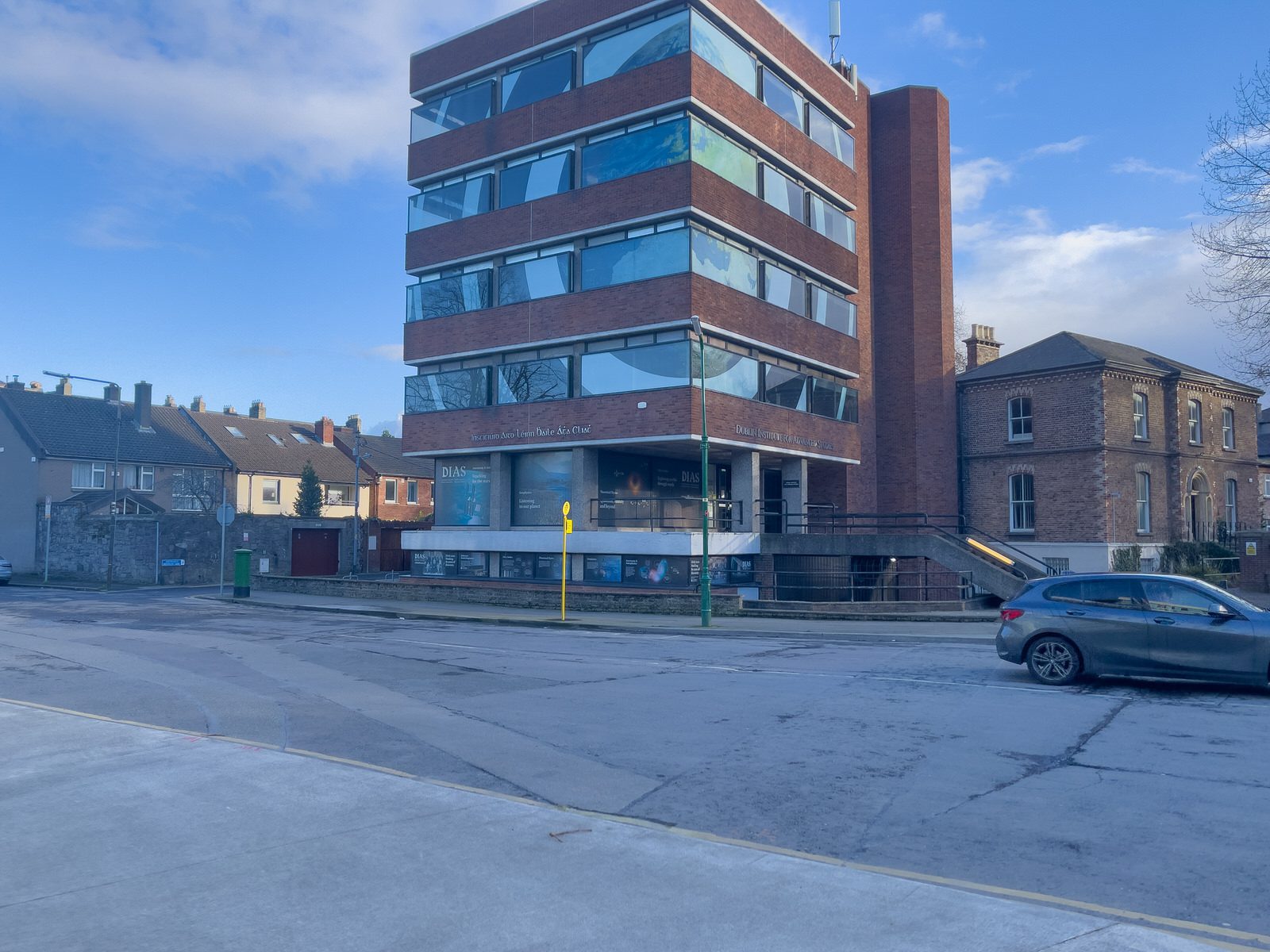
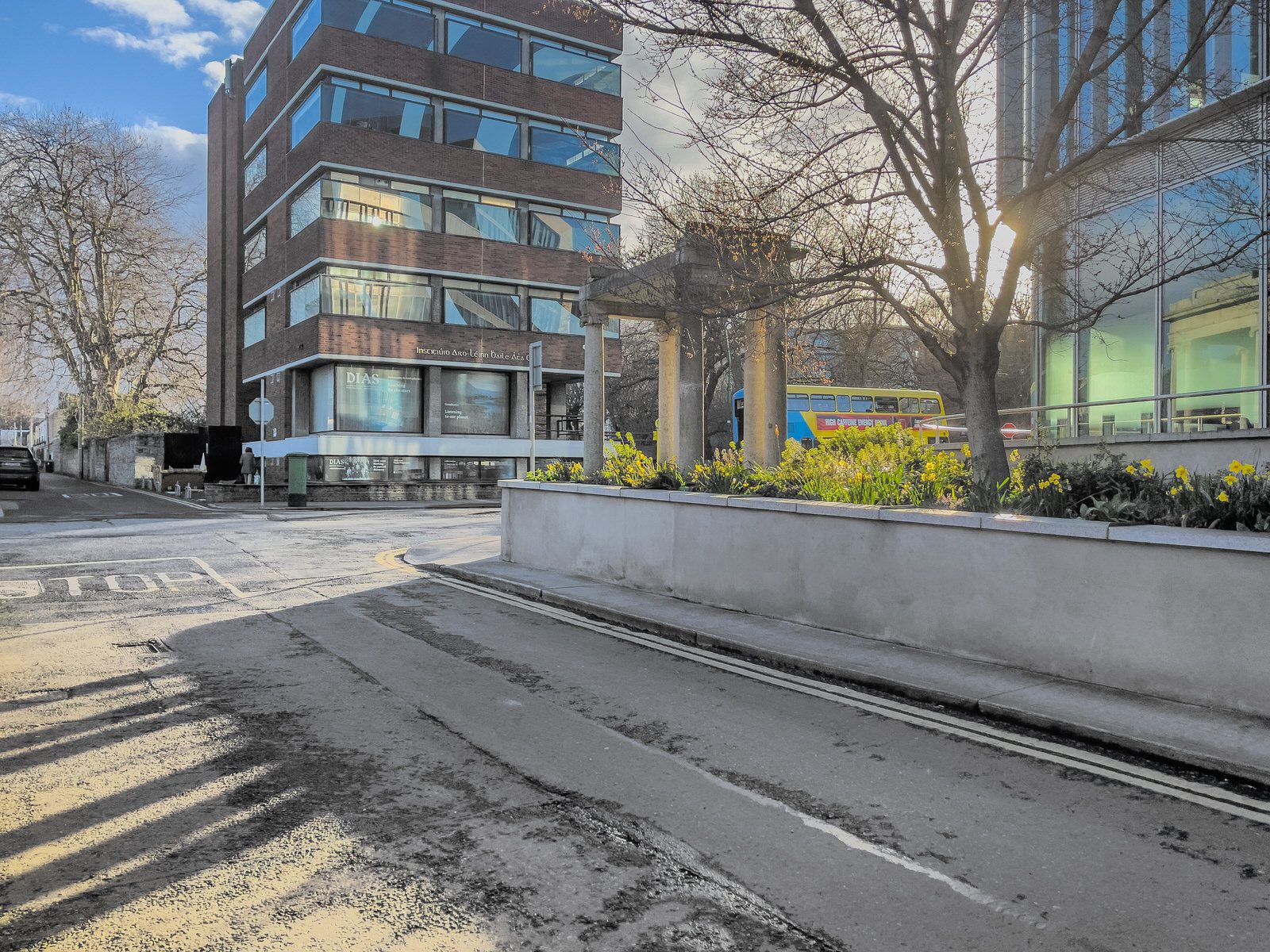
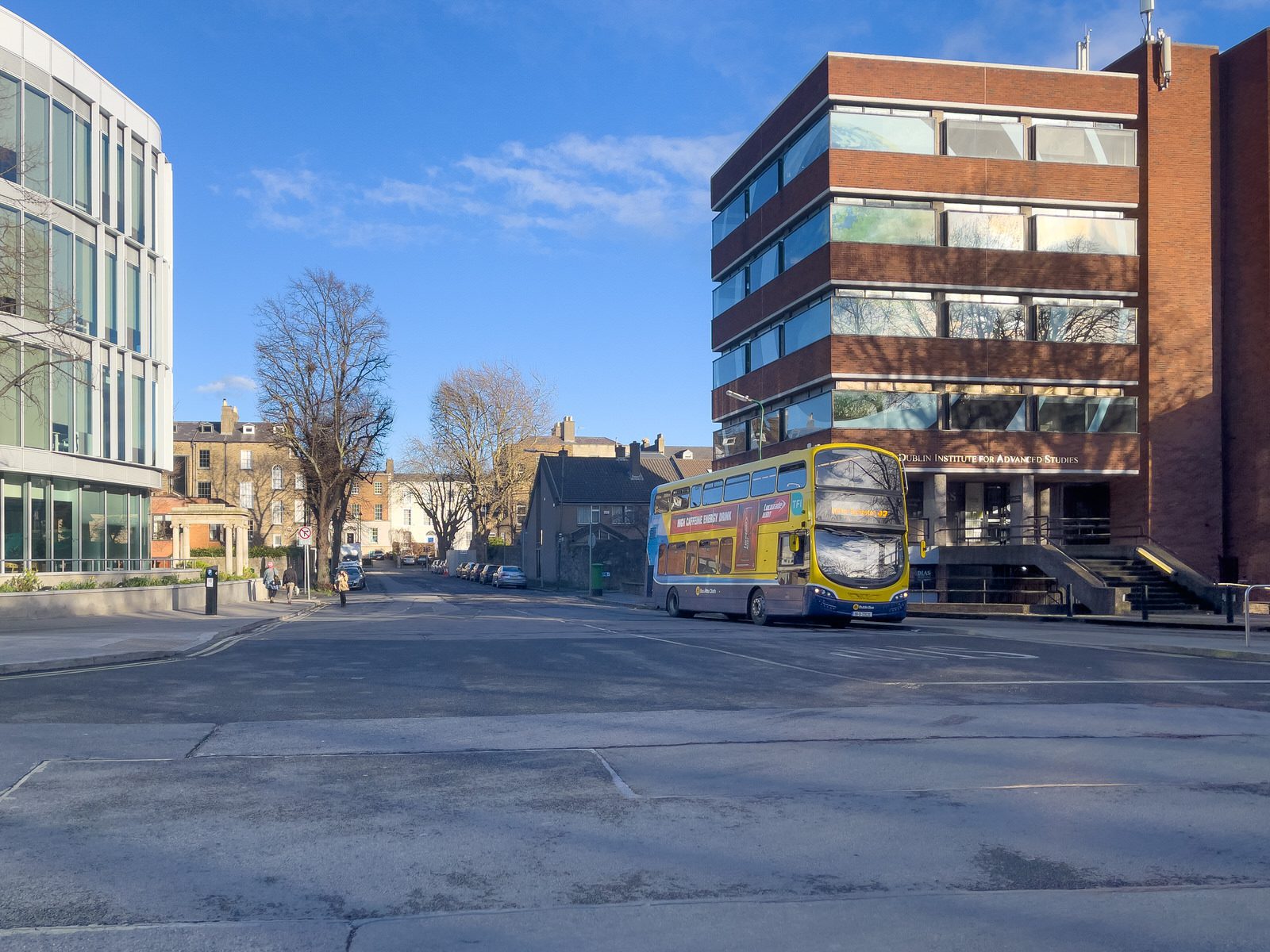
by infomatique
BEST KNOWN AS FATHER TED
In 2002, Dermot Morgan’s partner commissioned Galway-born sculptor Catherine Greene to design and produce a memorial statue.
Already a celebrity in Ireland, Morgan got his big break in Britain with Channel 4’s Irish sitcom Father Ted, which ran for three series from 1995 to 1998. Writers Graham Linehan and Arthur Mathews auditioned many actors for the title role, but Morgan’s enthusiasm won him the part.
Father Ted focuses on the misadventures of three morally dubious Irish Catholic priests, whose transgressions have caused them to be exiled to the fictional Craggy Island, off the coast of County Galway.
